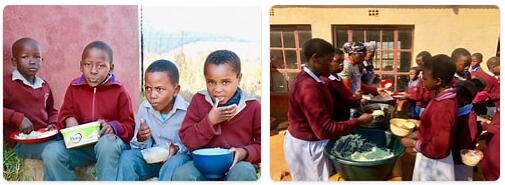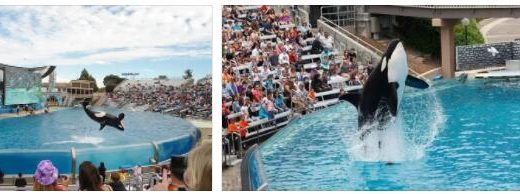FAO – Food and Agriculture Organization
The business
FAO’s activities are divided into four main areas: the organization compiles and disseminates knowledge, advises member countries, offers a meeting place for intergovernmental negotiations and disseminates knowledge in the field through development projects – all in matters relating to agriculture, forestry and fisheries. Note: according to Abbreviationfinder, FAO stands for Food and Agriculture Organization.
FAO works on the basis of long-term strategies. The overall strategy for 2000–2015 mainly emphasizes national and international cooperation to achieve the millennium goal of halving world hunger. As a complement, short-term strategies are formulated that contain more concrete activities.
As part of the information mission, the FAO produces a number of analyzes, manuals and overviews of the international supply situation each year, including The State of Food Insecurity in the World. Worldwide statistics on all sub-areas of the food and agriculture sector are collected in various databases.
The FAO also has the task of establishing international regulations, so-called codes of conduct, within its areas of expertise. For example, there is a code of conduct concerning the spread and use of pesticides.
One of FAO’s preventive warning systems is the GIEWS (Global Information and Early Warning System for Food and Agriculture), which monitors changes in weather and agricultural conditions. The purpose is to detect at an early stage and thus be able to avert imminent disasters, for example in the event of a drought, crop failure or grasshopper infestation. GIEWS was started after the great drought disasters south of the Sahara in the 1970’s.
Another special program is the SPFS (Special Program for Food Security), whose goal is to ensure that all people’s access to food is secured. SPFS is mainly focused on assisting poor countries, among other things by providing farmers with better equipment and technical knowledge.
In 1996, the FAO organized the world’s first summit on safe access to food. At the meeting, an action plan was adopted to halve the number of malnourished people in the world to 400 million in 2015. This then became one of the UN’s millennium goals. In 2006, however, an estimated 854 million people in the world were still malnourished.
In 1997, TeleFood was started as a follow-up to the 1996 summit. TeleFood organizes concerts and other events that are shown on TV and on the internet in order to raise money for small-scale grassroots projects in connection with World Food Day on 16 October. In its first ten years, the TV galas raised nearly $ 19 million, funding over 2,100 projects in nearly 130 countries. In Zambia, for example, an orphanage has been able to build its own garden after being provided with simple tools and seeds. The children, whose parents often died of AIDS, thus receive nutritious food and also learn to take care of the farms. Many other projects are concentrated on women, as they play a central role in agriculture in the third world.
FAO has a special technical assistance cooperation program, TCP (Technical Cooperation Program). TCP works through small, concrete development projects, usually aimed at rural people who have access to counseling and education. In Sri Lanka, for example, poor farmers have been helped to join in groups to take advantage of economies of scale, such as buying fertilizer or marketing their goods together.
A small part of the FAO’s work is development assistance in the field, often in collaboration with other aid agencies within the UN system. There is a program of relief efforts following natural and human disasters. The FAO played a leading role in the reconstruction of agriculture and forestry as well as fishing after the tsunami disaster in the Indian Ocean in December 2004. In the event of disasters, the FAO cooperates with the WFP, which has the task of providing food to the affected areas.
Sustainable development and environmental protection have long been central concepts in FAO’s work. With the debate on climate change and potentially radically changed conditions for, among other things, agriculture, the organization has sharpened its focus on these issues. In January 2007, the FAO got a new department for natural resources and environmental issues. This will lead the work in areas such as bioenergy and climate change.
Fishing
The FAO’s Department of Fisheries and Aquaculture is a forum where important international fisheries and aquaculture issues are discussed and recommendations are drawn up.
Like the rest of the FAO, the Department of Fisheries functions both as a specialist body focused on information, research and analysis and as an aid organization that conducts field work in various countries. During the first years of the 2000’s, the emphasis was on measures to avoid overfishing, promote small-scale coastal fishing and draw up certificates showing that fishery products come from areas with a well-managed environment.
The fisheries department’s mission is to ensure the long-term sustainable use of the world’s fish resources and aquaculture. As part of this, a code of conduct for responsible fishing was adopted in 1995. In 2001, an action plan was adopted to try to tackle the problem of illegal and unregulated fishing, which threatens many stocks.
The FAO advocates fish farming, which a few years into the 2000’s accounted for about a third of the world’s total fish catch.



